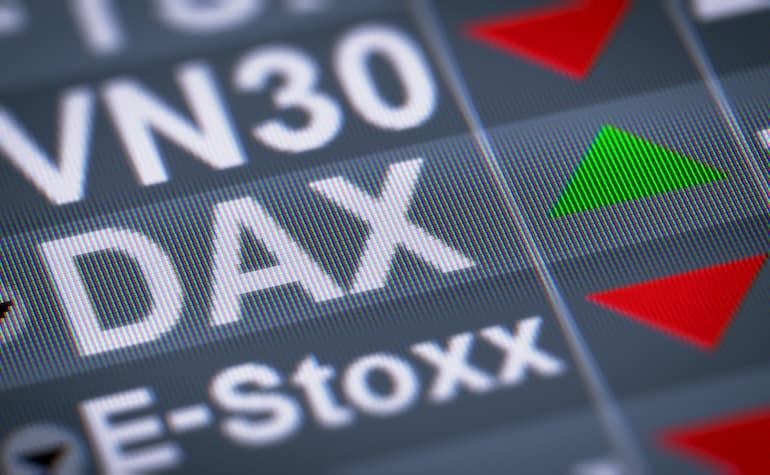ข่าวสารตลาด & มุมมองเชิงลึก
ก้าวนำตลาดด้วยมุมมองเชิงลึกจากผู้เชี่ยวชาญ ข่าวสาร และการวิเคราะห์ทางเทคนิค เพื่อเป็นแนวทางในการตัดสินใจซื้อขายของคุณ.

Multi-Timeframe (MTF) analysis is not just about checking the trend on the daily before trading on the hourly; ideally, it involves examining and aligning context, structure, and timing so that every trade is placed with purpose.
When done correctly, MTF analysis can filter market noise, may help with timing of entry, and assist you in trading with the trending “tide,” not against it.
Why Multi-Timeframe Analysis Matters
Every setup exists within a larger market story, and that story may often define the probability of a successful trade outcome.
Single-timeframe trading leads to the trading equivalent of tunnel vision, where the series of candles in front of you dominate your thinking, even though the broader trend might be shifting.
The most common reason traders may struggle is a false confidence based on a belief they are applying MTF analysis, but in truth, it’s often an ad-hoc, glance, not a structured process.
When signals conflict, doubt creeps in, and traders hesitate, entering too late or exiting too early.
A systematic MTF process restores clarity, allowing you to execute with more conviction and consistency, potentially offering improved trading outcomes and providing some objective evidence as to how well your system is working.
Building Your Timeframe Hierarchy
Like many effective trading approaches, the foundation of a good MTF framework lies in simplicity. The more complex an approach, the less likely it is to be followed fully and the more likely it may impede a potential opportunity.
Three timeframes are usually enough to capture the full picture without cluttering up your chart’s technical picture with enough information to avoid potential contradiction in action.
Each timeframe tells a different part of the story — you want the whole book, not just a single chapter.

Scalpers might work on H1-M15-M5, while longer-term traders might prefer H4-H1-H15.
The key is consistency in approach to build a critical mass of trades that can provide evidence for evaluation.
When all three timeframes align, the probability of at least an initial move in your desired direction may increase.
An MTF breakout will attract traders whose preference for primary timeframe may be M15 AND hourly, AND 4-hourly, so increasing potential momentum in the move simply because more traders are looking at the same breakout than if it occurred on a single timeframe only.
Applying MTF Analysis
A robust system is built on clear, unambiguous statements within your trading plan.
Ideally, you should define what each timeframe contributes to your decision-making process:
- Trend confirmed
- Structure validated
- Entry trigger aligned
- Risk parameters clear
When you enter on a lower timeframe, you are gaining some conviction from the higher one. Use the lower timeframe for fine-tuning and risk control, but if the higher timeframe flips direction, your bias must flip too.
Your original trading idea can be questioned and a decision made accordingly as to whether it is a good decision to stay in the trade or, as a minimum action, trail a stop loss to lock in any gains made to date.
Putting MTF into Action
So, if the goal is to embed MTF logic into your trade decisions, some step-by-step guidance may be useful on how to make this happen
1. Define Your Timeframe Stack
Decide which three timeframes form your trading style-aligned approach.
The key here is that as a starting point, you must “plant your flag” in one set, stick to it and measure to see how well or otherwise it works.
Through doing this, you can refine based on evidence in the future.
One tip I have heard some traders suggest is that the middle timeframe should be at least two times your primary timeframe, and the slowest timeframe at least four times.
2. Build and Use a Checklist
Codify your MTF logic into a repeatable routine of questions to ask, particularly in the early stages of implementing this as you develop your new habit.
Your checklist might include:
- Is the higher-timeframe trend aligned?
- Is the structure supportive?
- Do I have a valid trigger?
- Is risk clearly defined?
This turns MTF from a concept into a practical set of steps that are clear and easy to action.
3. Consider Integrating MTF Into Open Trade Management
MTF isn’t just for entries; it can also be used as part of your exit decision-making.
If your higher timeframe begins showing early signs of reversal, that’s a prompt to exit altogether, scale out through a partial close or tighten stops.
By managing trades through the same multi-timeframe approach that you used to enter, you maintain logical consistency across the entire lifecycle of the trade.
Final Action
Start small. Choose one instrument, one timeframe set, and one strategy to apply it to.
Observe the clarity it adds to your decisions and outcomes. Once you see a positive impact, you have evidence that it may be worth rolling out across other trading strategies you use in your portfolio.
Final Thought
Multi-Timeframe Analysis is not a trading strategy on its own. It is a worthwhile consideration in ALL strategies.
It offers a wider lens through which you see the market’s true structure and potential strength of conviction.
Through aligning context, structure, and execution, you move from chasing an individual group of candles to trading with a more robust support for a decision.


After reaching the high of 1.1250, last tested in 2022, the EURUSD has been trading steadily lower and currently sits along the 1.0850 support level, formed by the 61.8% Fibonacci retracement level and the previous swing low from early July. Looking at the technical aspects, the Ichimoku cloud indicates continued bearish pressures, with the top of the channel providing dynamic resistance, highlighting further downside potential for the EURUSD. The current downtrend on the EURUSD has been driven by the European Central Bank’s (ECB) comments in July that there was no clear bias in favour of hiking or holding rates for the upcoming meeting in September.
Coupled with the increasing likelihood of another rate hike to come from the US FOMC in September, as the Fed continues to fight inflation, strength in the DXY has led to the EURUSD trading lower. While a brief retracement could be likely to retest the upper bound of the channel, look for the EURUSD to maintain within the bearish channel. If the price breaks below the support level of 1.0850, this could signal a confirmation of further downside, with the next key support level at the previous swing low, along the 1.0650 price level.


The EURUSD pair has been navigating challenging waters in recent weeks, experiencing a decline of more than 5% since mid-July. This decline has primarily been due to the USD's strength, as the Federal Reserve remains firm in its commitment to maintaining higher interest rates for longer to bring down inflation. Last week marked a critical turning point for EURUSD as it breached a crucial trend level.
The ascending channel that had been in place since early 2023 was broken, resulting in a swift price decline to around 1.07. Presently, the pair is sitting precariously on an important horizontal support level. The significance of this support level cannot be overstated.
Failure to hold at this level could lead to further downward movement, with the next support zone around the 1.05 mark. This impending test of support comes at a pivotal moment as the market eagerly await the release of the US Consumer Price Index (CPI) data later this week. The upcoming CPI data will be the main event for USD traders this week.
A decline in inflation could potentially soften the USD, suggesting that the Fed might consider an earlier-than-expected rate cut. On the other hand, if inflation exceeds analyst estimates, it may bolster the USD's strength, potentially causing the EURUSD pair to breach its current support level and head towards lower levels. As we approach the release of the CPI data, all eyes are on this key economic indicator.
Its outcome will undoubtedly serve as a pivotal driver of direction for the EURUSD pair this week.


EU and UK indices are looking to open slightly stronger despite a weak lead from the Asian session. Aussie and Asian indices finish in the red after US-China tech-related frictions and disappointing Japanese GDP revisions weighed on risk sentiment. Asian session wrap - FX Markets The USD was softer with DXY retreating from extreme RSI overbought levels to push below the key 105.00 level.
Dovish commentary from the Fed’s Logan ahead of the Fed blackout window and strength in the Dollars major counterparts outweighing the sour risk sentiment which would normally see the Dollar benefit from haven flows. EUR bounced back after a sell-off on Yesterday’s dismal German data. EURUSD pushing back above the 1.0700 level after finding support at the June lows.
USDJPY was choppy with early drop due to the risk-off mood and MoF jawboning saw the pair test the S/R level at 146.63 before bouncing back as the Asian session progressed. Japanese Finance Minister Suzuki stating in comments that rapid FX moves are undesirable and warned the Japanese MoF won't rule out any options (intervention?) AUDUSD rallied to test the key 0.6400 S/R level, despite the risk-off tone and recent commodity pressure. A weaker USD and some technical support from the daily trendline seeming to be the key drivers.
Looking ahead, the main risk events data wise will be Canadian jobs figures later today and Chinese CPI released on Saturday.


The DAX cooled off in yesterday’s session off the back of higher-than-expected German inflation data. With analysis expecting the Year-on-Year rate to fall to 6%, the actual number was higher at 6.2%. This has raised some concerns over the fight against inflation in Germany, putting an end to the three-day green streak for the DAX.
Technically, price bounced nicely off the support zone around 15,500-15,600. This level has acted as both a key area of resistance and support in the past 6 months. Since the first breakout above that zone in March, price has been ranging sideways ever since.
Multiple attempts to break and hold above the January 2022 high have failed, and the recent sell-off coincided nicely at the mid-range level. From a purely support and resistance technical view, there are two scenarios that could occur. The first would be a fall back down to the key support level around 15,600.
The second could be a positive catalyst news even that kicks price through the mid-range resistance level and back up towards the January 2022 high for a 4th attempt at breaking through. Since the recent low 2 weeks ago, the price action formed a more bullish market structure on the lower timeframes. We’ve seen a clean higher high and higher low.
While this bullish structure holds, bulls could remain in control.


In June, the Reserve Bank of Australia (RBA) surprised markets with a decision to hike rates by 25bps, taking the Australian cash rate to 4.10%. This was decided on the basis that further increases were required to provide greater confidence that inflation would return to the target range within a reasonable timeframe. This decision led to the AUDUSD climbing steadily from the 0.6650 price level up toward the 0.69 round number resistance area.
Currently, the AUDUSD is trading along the 0.6670 price level, just below the 23.60% Fibonacci retracement level, in the lead-up to the RBA decision on 4th July. While markets anticipate that the RBA could hold rates at 4.10%, given that the consumer price index (CPI) has fallen significantly from 6.8% to 5.6%, another surprise hike from the RBA could still be possible as inflation is still well above the target range. As the AUDUSD found relative support along the 0.6595 price level and with the Relative Strength Index (RSI) trending to the upside, a decision from the RBA to hike rates to 4.35% could lead the AUDUSD to climb steadily toward the immediate resistance level of 0.69.
Watch for the price to break above the 0.67 round number level, to signal a confirmation of the upside, with the 0.68 price level coinciding with the 61.8% Fibonacci retracement level providing brief resistance on the path up to the 0.69 resistance area.


Since March 2023, the GBPUSD had been trading higher as the US Federal Reserve and the Bank of England (BoE) maintained along their path to continue raising rates, as they battled to bring inflation down to their 2-3% target level. As the DXY recovered in strength, this led the GBPUSD to reverse from the high of 1.3130, trading down toward the lower bound of the bullish channel, along the 1.28 price level. Although the Consumer Price Index (CPI) data in July had a signaled a slowdown of inflation growth to 7.9%, this is still well above the BoE’s target level and significantly higher, compared to the other major economies.
At the upcoming meeting on 3rd August, the BoE is expected to raise rates by 25bps, a fourteenth successive tightening, taking rates to 5.25% the highest since December 2007. However, it cannot be ruled out that the BoE could further surprise markets with a 50bps rate hike, similar to its actions in June. At the upcoming meeting on 3rd August, the BoE is expected to raise rates by 25bps, a fourteenth successive tightening, taking rates to 5.25% the highest since December 2007.
However, it cannot be ruled out that the BoE could further surprise markets with a 50bps rate hike, similar to its actions in June.

